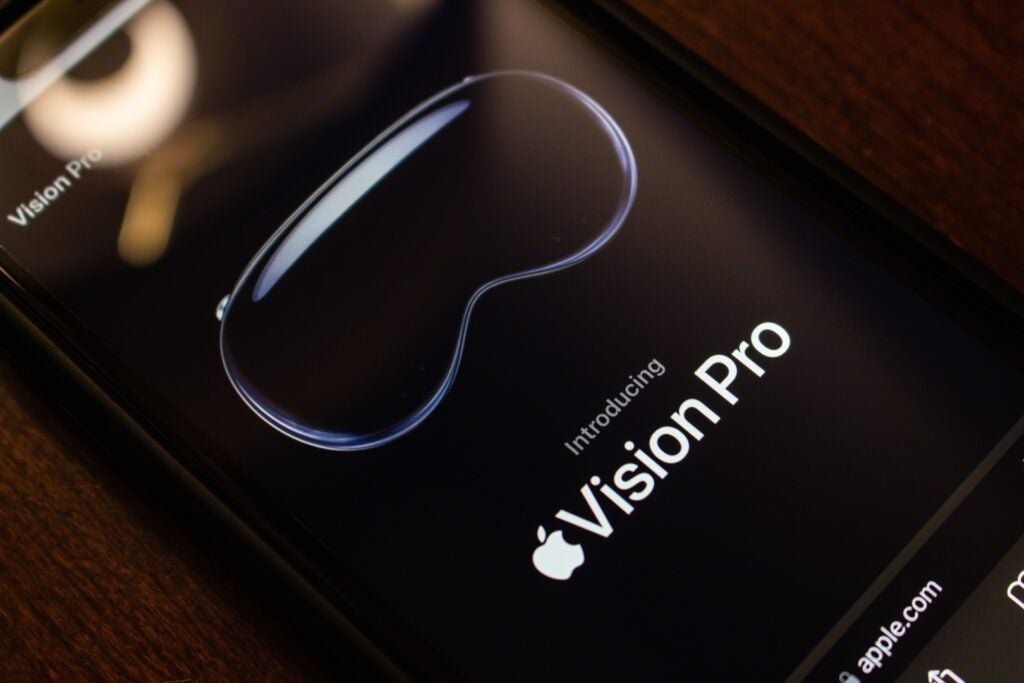Apple Faces Marketing Challenge with Vision Pro Mixed-Reality Headset
Apple, Inc. confirmed last week that its Vision Pro mixed-reality headset will be made available in the U.S. on Feb. 2, with preorders beginning Jan. 19. This announcement has sparked much anticipation, but Bloomberg columnist Mark Gurman believes that Apple will face one of its toughest marketing challenges yet with this new product.
The Vision Pro is priced at $3,499 and comes with limited battery life, an unwieldy design, and no killer app, according to Gurman. Despite these drawbacks, Apple is expecting an initial sales surge from early adopters, followed by a tapering off of demand. Gurman also suggests that retail stores may need twice as much inventory space during the opening weekend than afterward.
Unlike previous Apple devices such as the iPod, iPad, iPhone, and Watch, the Vision Pro will require more coaxing and coaching to convince consumers to try and buy it. Gurman points out that few consumers are accustomed to wearing a mixed-reality headset, and Apple’s model requires particular care. If the device is not fitted correctly or lacks the right lenses, the entire experience could be ruined, potentially costing Apple a $3,499 sale forever.
To address these challenges, Apple has prepared its most sophisticated sales pitch ever. The company has trained several hundred employees at its offices in Cupertino and hosted several hundred employees to walk them through the process. Gurman also reveals that customer demos will begin at Apple’s U.S. retail stores on the launch date, with sign-ups starting at 8 a.m. local time. More than a dozen demo units will be available simultaneously at the largest stores, with dedicated sit-down areas for presentations.
The demo process for the Vision Pro involves scanning the user’s face to determine the light seal, foam cushion, and band size that suits them. If the user wears glasses, the store worker will scan the lenses for prescription information. All these details will be used to assemble the demo device with correct accessories. The store employee will then explain how the interface works and how to control the device. The customer will need to calibrate the device with various exercises to track their eyes and hands. The demo will showcase various features, including photo apps, panorama shots, 3D images, using the device as a computer or iPad replacement, and immersive movies. Demo devices will also come preloaded with third-party apps launching next month.
The goal of these demos is to provide users with a compelling but not exhausting experience, leaving them wanting more. However, ensuring customer comfort while wearing the Vision Pro could be a challenge, as some retail employees have reported feeling tired and sweaty after only half an hour of use. Apple is also taking steps to ensure that product reviewers have the best experience by having them participate in two in-person sessions with the company before receiving a device.
Despite Apple’s efforts, Gurman believes that success within the next year or two is uncertain due to the high price and cumbersome nature of the product. However, he suggests that Apple may have laid the groundwork for something big in the future, once the price and weight decrease and more compelling features are introduced.
Apple’s stock ended Friday’s session up 0.18% at $185.92.





